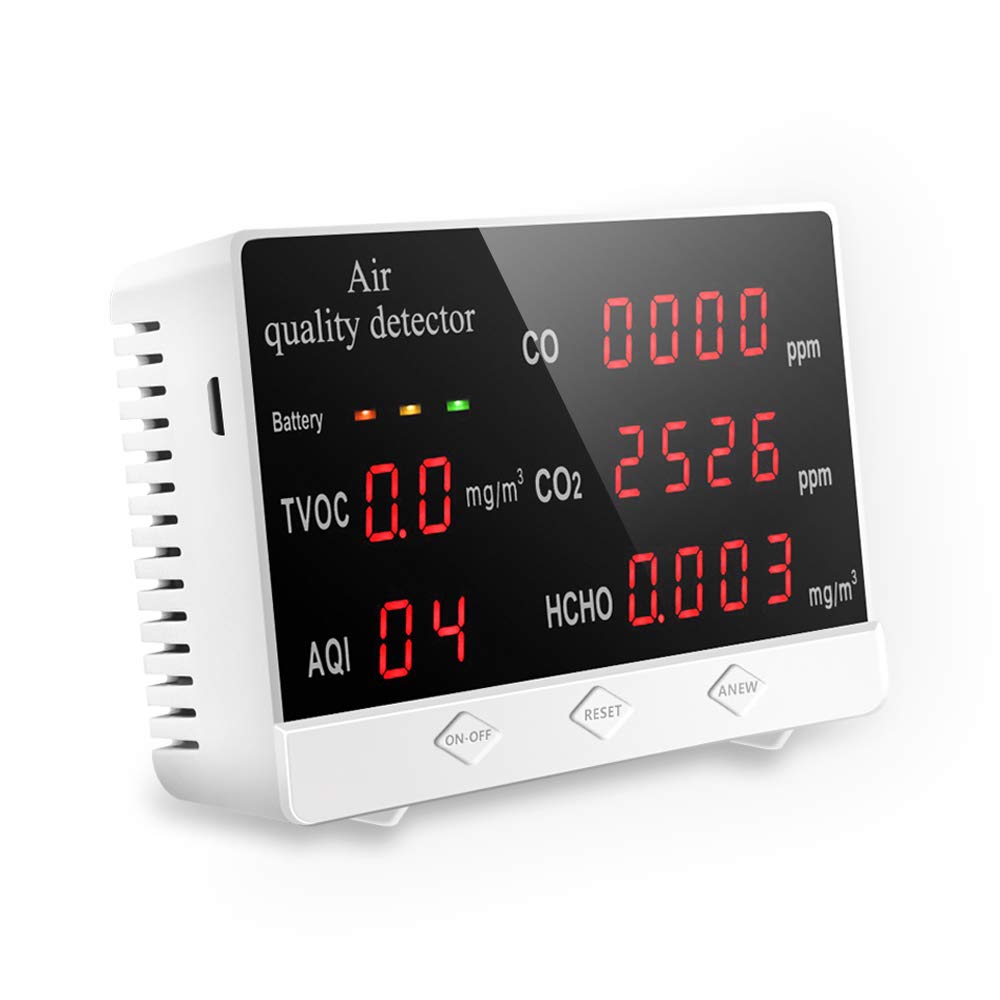Here at Torque Health & Fitness, Home of CrossFit Torque, we have been using a CO2 detector since early October to bring our safety protocols to the next level.
It’s more than just peace of mind for our members. CO2 levels are not correlated with COVID transmission risk, but they are a metric that tells us how often the air is exchanged in our gym. If our CO2 levels are lower, then we have a better air exchange and thus lower risk of COVID transmission.
Being as it’s the end of December in middle of New England Winter, this is vital information. We cannot keep the doors open because of the weather (heck, it’s 8 degrees out currently). We are going above and beyond to keep our member’s safety a top priority.
This post is from Two Brain Business, our Business Mentors: Why are gyms buying and installing CO2 monitors?
COVID-19 Transmission Summary
By Mike Lee, Two-Brain Business chief information officer
This summary attempts to clarify the sometimes-conflicting information provided online by multiple sources, including the CDC and WHO.
The core of the information can be found in the following FAQ, which is the combined work of “scientists and engineers with many years of collective research experience related to indoor air quality, aerosol science, aerosol disease transmission, and engineered control systems for aerosols.” We recommend you look through the FAQ if you want more links to scientific journals.
This is also a good summary: “COVID-19 Is Transmitted Through Aerosols.”
A technical summary can be found here.
“Fomite” Transmission (Touching Surfaces)
Description: Touching a surface that contains SARS-CoV-2, which transfers to your hand, and then touching your mouth, nostrils or eyes.
Transmission Likelihood: Low.
“During the initial stages of the pandemic, there was concern about surface transmission. However, (the) latest research suggests that this is unlikely to be a major route of transmission as although SARS-CoV-2 can persist for days on inanimate surfaces, attempts to culture the virus from these surfaces were unsuccessful.” —The Lancet: “COVID-19 Transmission—Up in the Air”
Additional supporting info: The Lancet: “Low Risk of SARS-CoV-2 Transmission by Fomites in Real-Life Conditions.”
To contract COVID-19 from fomite transmission, a COVID-19-positive person must leave a significant amount of droplets on a surface through a cough or sneeze. Then, a person must touch that surface within one to two hours and then touch his or her mouth, nostrils or eyes before washing the hands.
Even the WHO states that this is a minor method of transmission:
“Despite consistent evidence as to SARS-CoV-2 contamination of surfaces and the survival of the virus on certain surfaces, there are no specific reports which have directly demonstrated fomite transmission.” —WHO
A few other articles from The New York Times:
- “Surfaces Are ‘Not the Main Way’ Coronavirus Spreads, CDC Says”
- “The Coronavirus Is Airborne Indoors. Why Are We Still Scrubbing Surfaces?”
Risk Mitigation: Most scientific publications still advocate the cleaning of surfaces just to be safe but acknowledge that this is a minor transmission method and shouldn’t be done in excess as cleaning chemicals can also cause an unsafe environment.
Additional measures:
- Frequent hand washing.
- Keep cleaning protocols but continually reassess to ensure fit for purpose.
- Provide the means for members to do their own cleaning with wipes before they use equipment.
“Large/Ballistic” Droplet Transmission (Coughing, Sneezing, Yelling)
Description: Droplets of saliva or other respiratory fluid fly from one person to another via a cough or sneeze, or, to a lesser extent, through talking/yelling. Droplets land on the eyes, nostrils or mouth. They might also land on the hands, and then the receiver touches the eyes, nostrils or mouth.
Transmission Likelihood: Low.
This transmission method is the most well known because we are used to it as a mechanism for the spread of the common cold or flu. It is second nature to avoid sneezing or coughing on others and avoid anyone who is sneezing or coughing.
Given that most of these droplets fall within 3-6 feet of the person sneezing or coughing, you are at low risk if you are socially distancing.
Risk Mitigation:
- Social distancing with a minimum of 6 feet of space.
- Do not leave your home or enter another building if you have any symptoms (coughing, sneezing, etc.).
- Wear a mask that effectively covers the mouth and nose.
Aerosol Transmission (Exhaling)
Description: Small droplets of saliva or respiratory fluid stay airborne when people exhale either from talking, yelling or just being silent. They are then inhaled through the nose or mouth, or, to a lesser extent, absorbed through the eyes.
Mounting evidence suggests this is the primary transmission method of COVID-19, but it has not been fully endorsed by the CDC and the WHO for historical reasons. The only two other diseases that are commonly accepted as airborne are measles and chickenpox. Officially declaring COVID-19 as airborne would have large ripple effects on many infection-prevention strategies.
- The New York Times: “239 Experts With One Big Claim: The Coronavirus Is Airborne”
- Time: “COVID-19 Is Transmitted Through Aerosols”
- Oxford Academic: “A Rosetta Stone for Understanding Infectious Drops and Aerosols”
The most common analogy for aerosol-based transmission is indoor smoking. If someone was smoking indoors and you wanted to avoid the secondhand smoke, you would move away from that individual. However, if the doors and windows are closed so no outside air can come in, the smoke will eventually fill the house and you will breathe in the smoke. If you open some doors or windows, the smoke starts to dissipate.
Aerosol transmission is similar: An infected individual breathes out air droplets, and over time they saturate the air indoors. Individuals who breathe in that air then contract COVID-19 after five or more minutes of exposure in the saturated environment.
Transmission Likelihood: High.
This is the only explanation for many of the superspreader events and the increased infections arising from small home gatherings. Here is a proposed risk-assessment chart from a group of scientists and engineers: BMJ.com.
Risk Mitigation:
- Stay outside if at all possible.
- Maintain social distancing with a minimum of 6 feet of space.
- Do not leave your home or enter another building if you have any symptoms (coughing, sneezing, etc.).
- Wear masks and other protections. This greatly reduces aerosol exposure because aerosols get trapped in porous materials.
- Wear masks properly: fully cover mouth and nose with no gaps.
- Ensure proper airflow and ventilation with outside air—open doors and windows, run fans (even if it’s cold outside).
- Use a CO2 monitor as a proxy for measuring how much human-produced aerosol is in the air:
- Outside air is around 400 ppm.
- Well-ventilated indoor air is <700 ppm.
- Use the monitor to see where there are hotspots.
- Use a HEPA air filter in your hotspot areas where there are higher concentrations of CO2. HEPA filters will filter out aerosols in the air.
Thanks to Two Brain Business for this post.
To our Torque members: we are your happy place. A place to not just exercise, but to mentally have a release. This CO2 detector is just another way to make sure this stays your happy place.
-Coach Amanda, Torque Coaches & Staff


